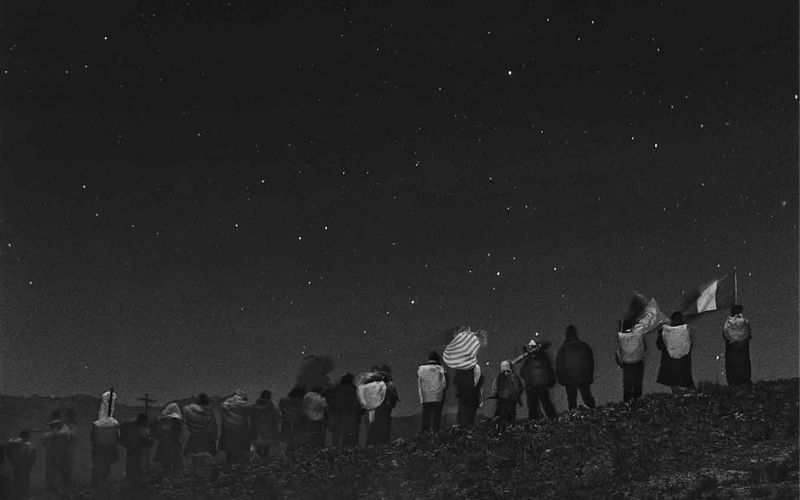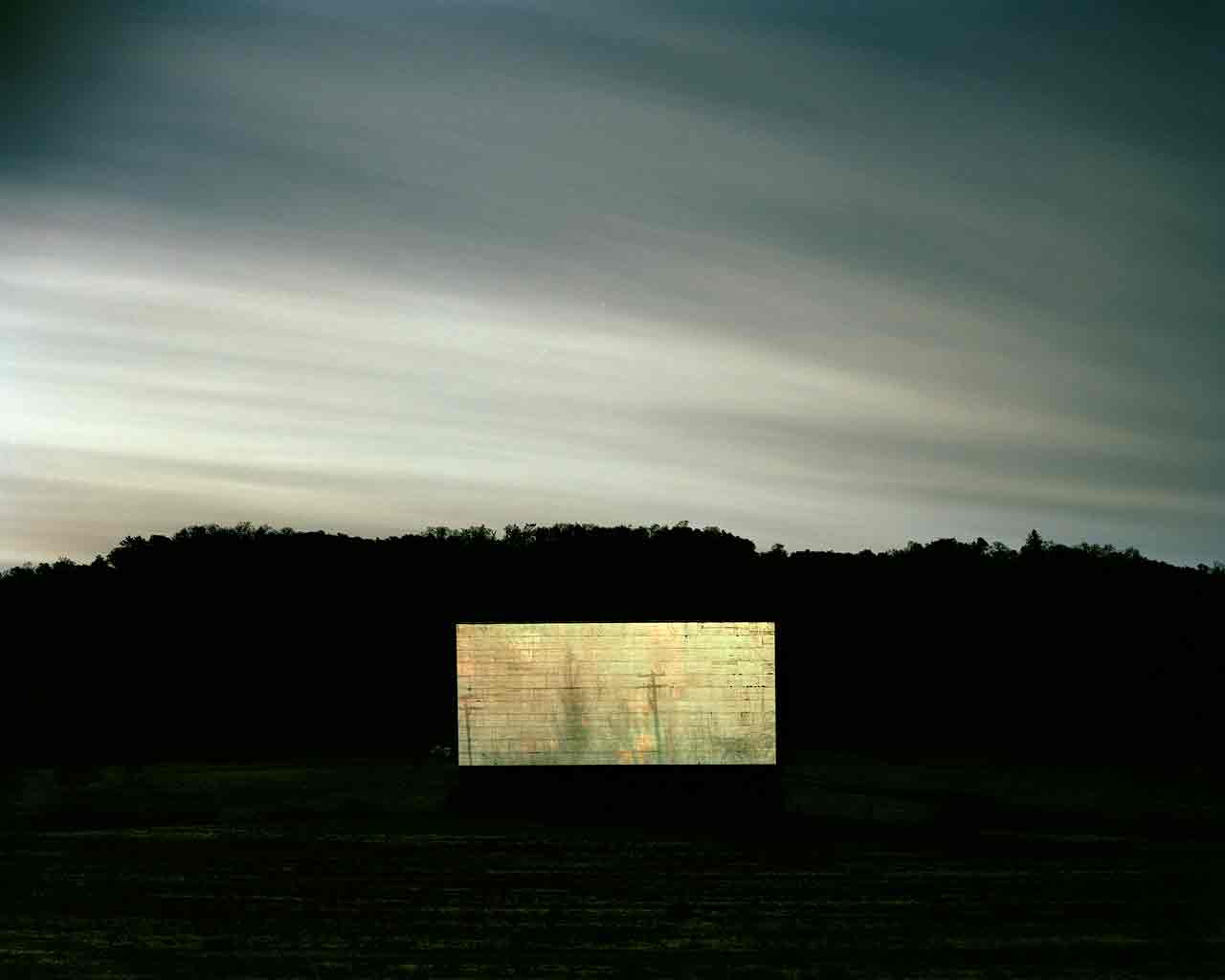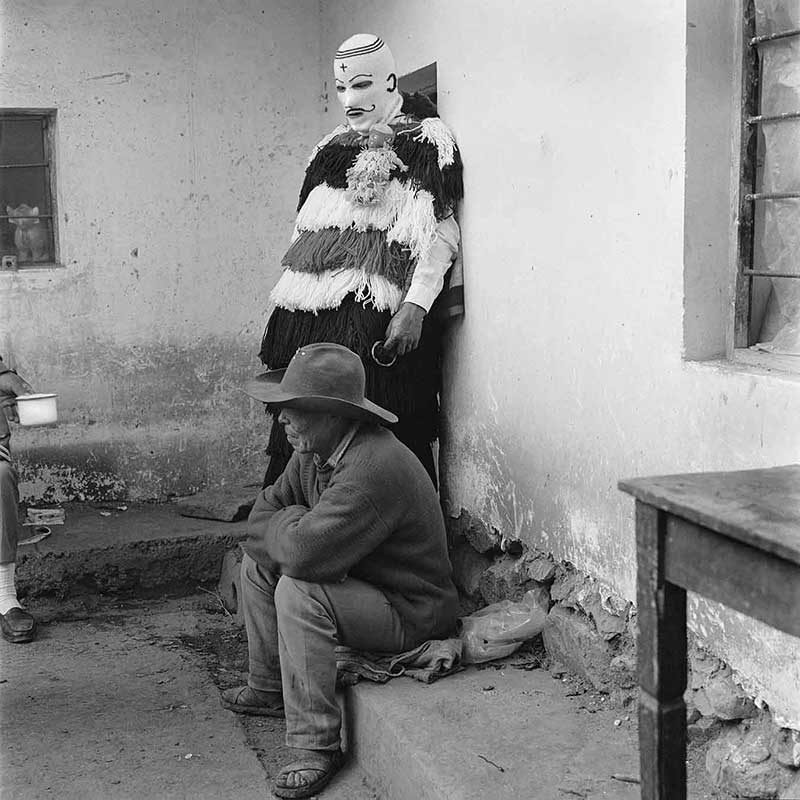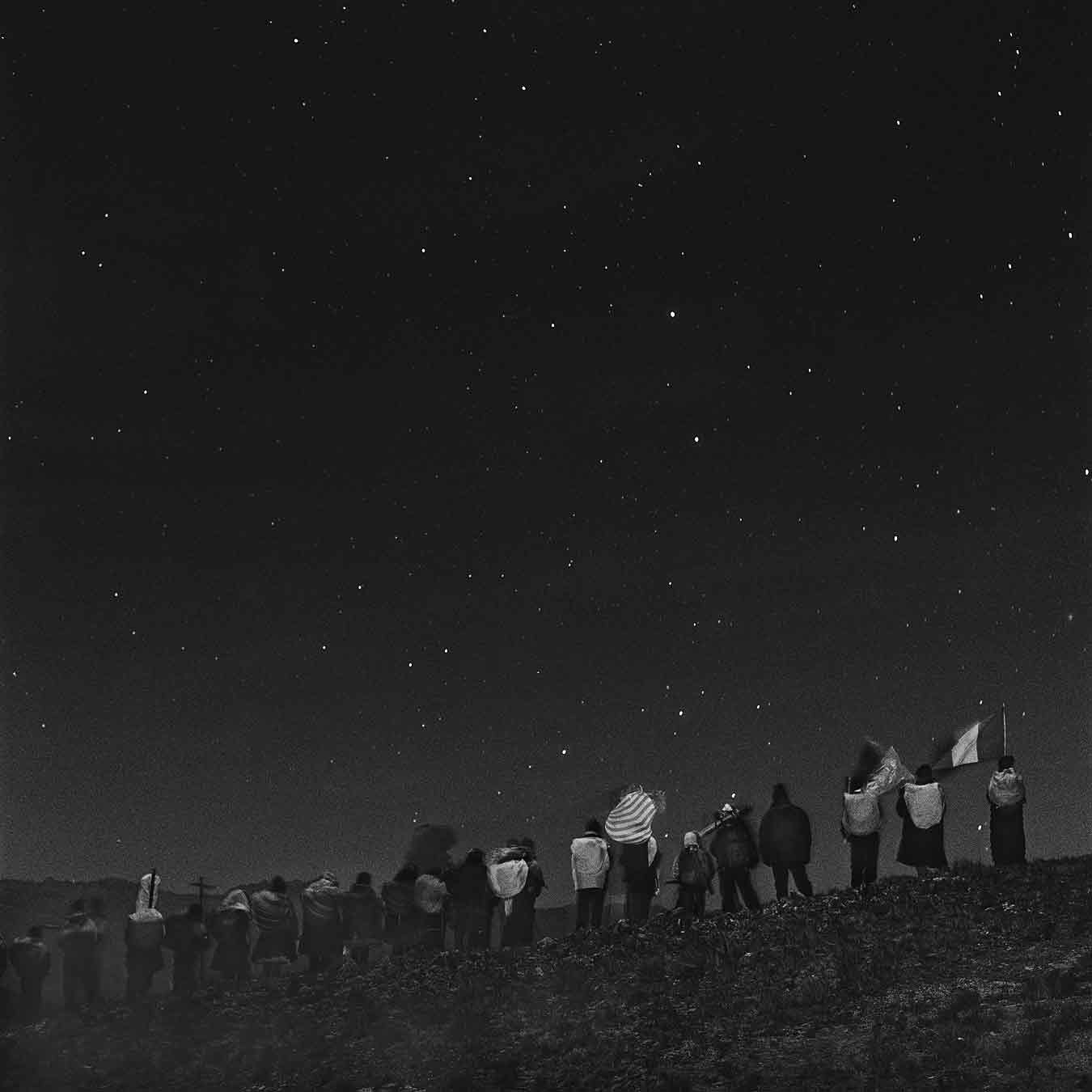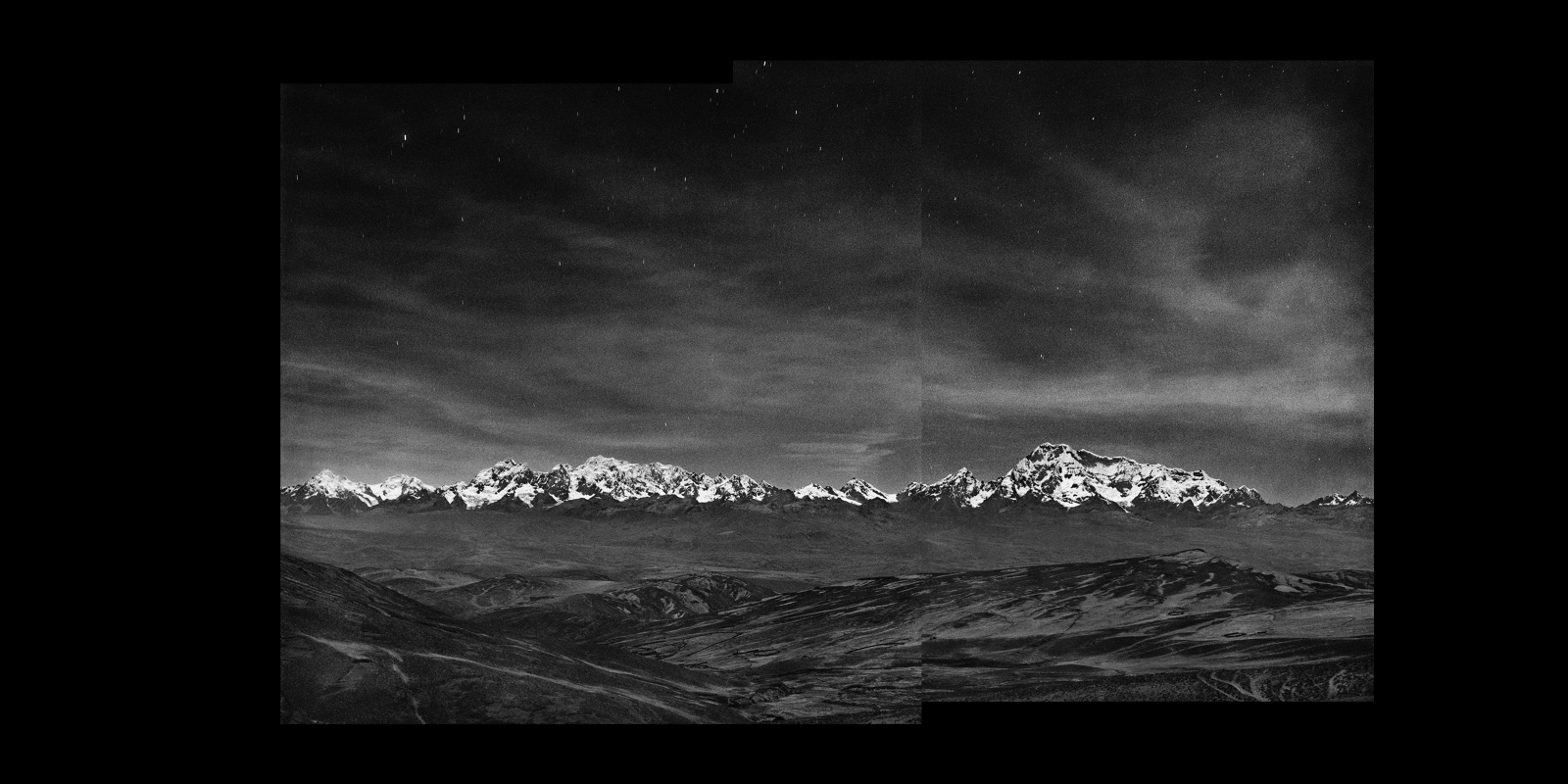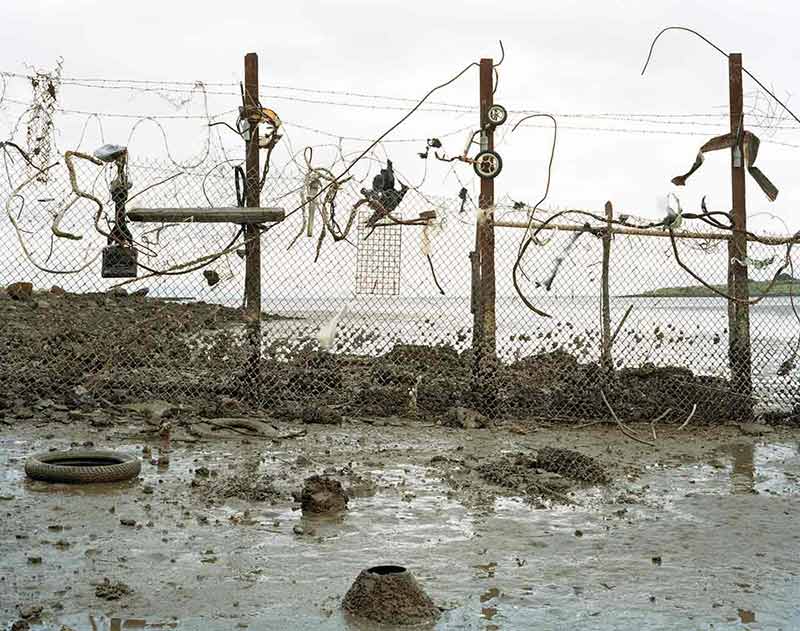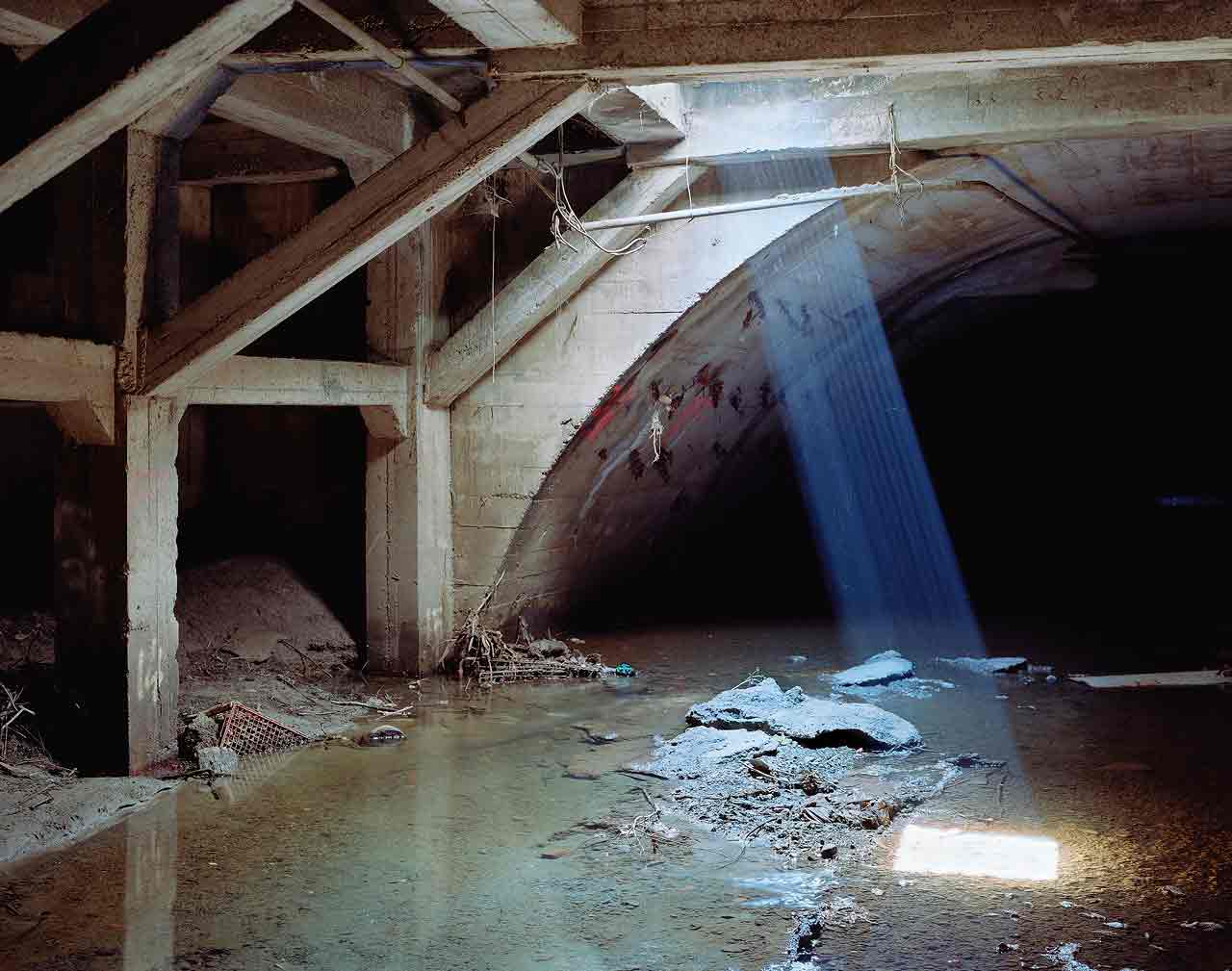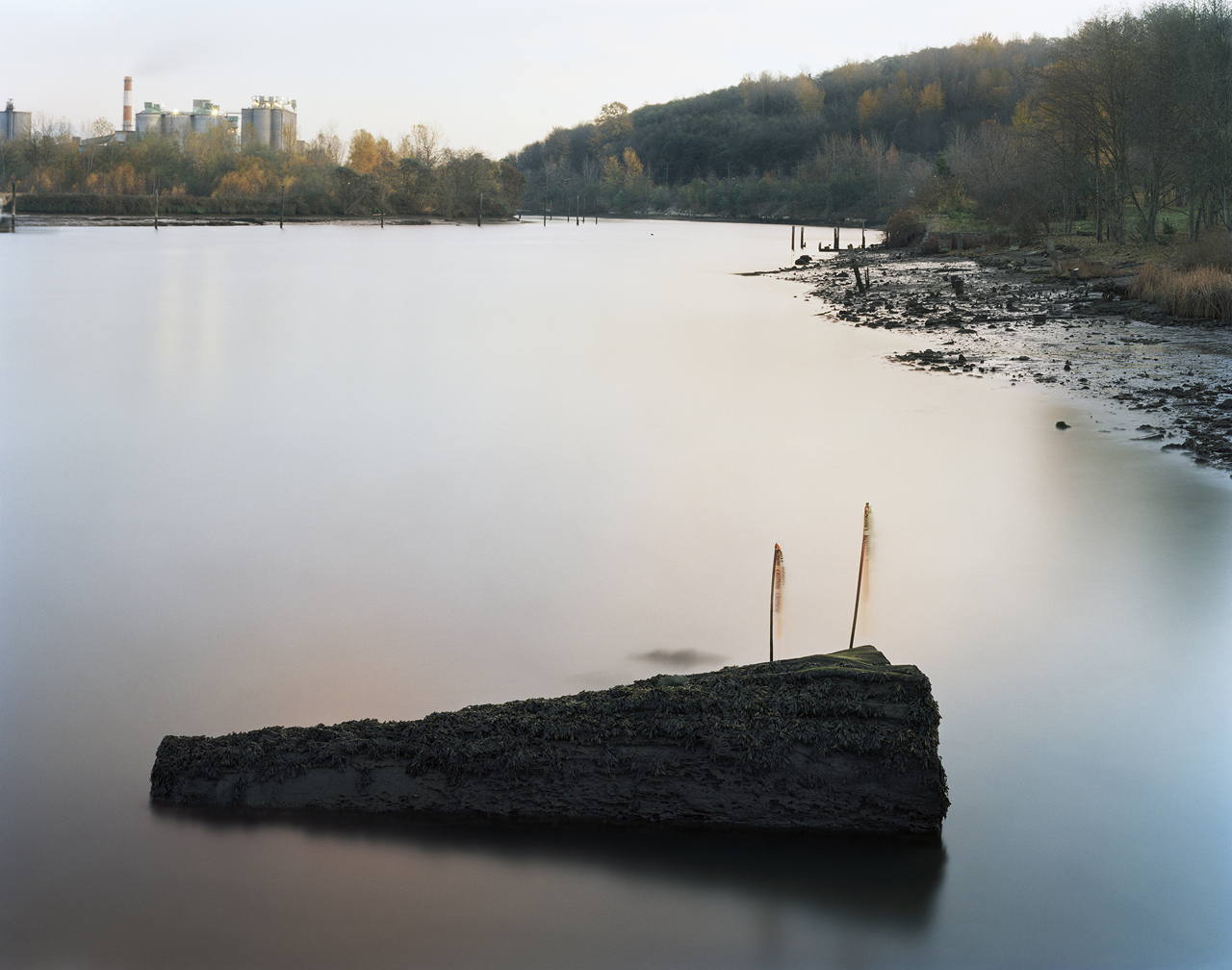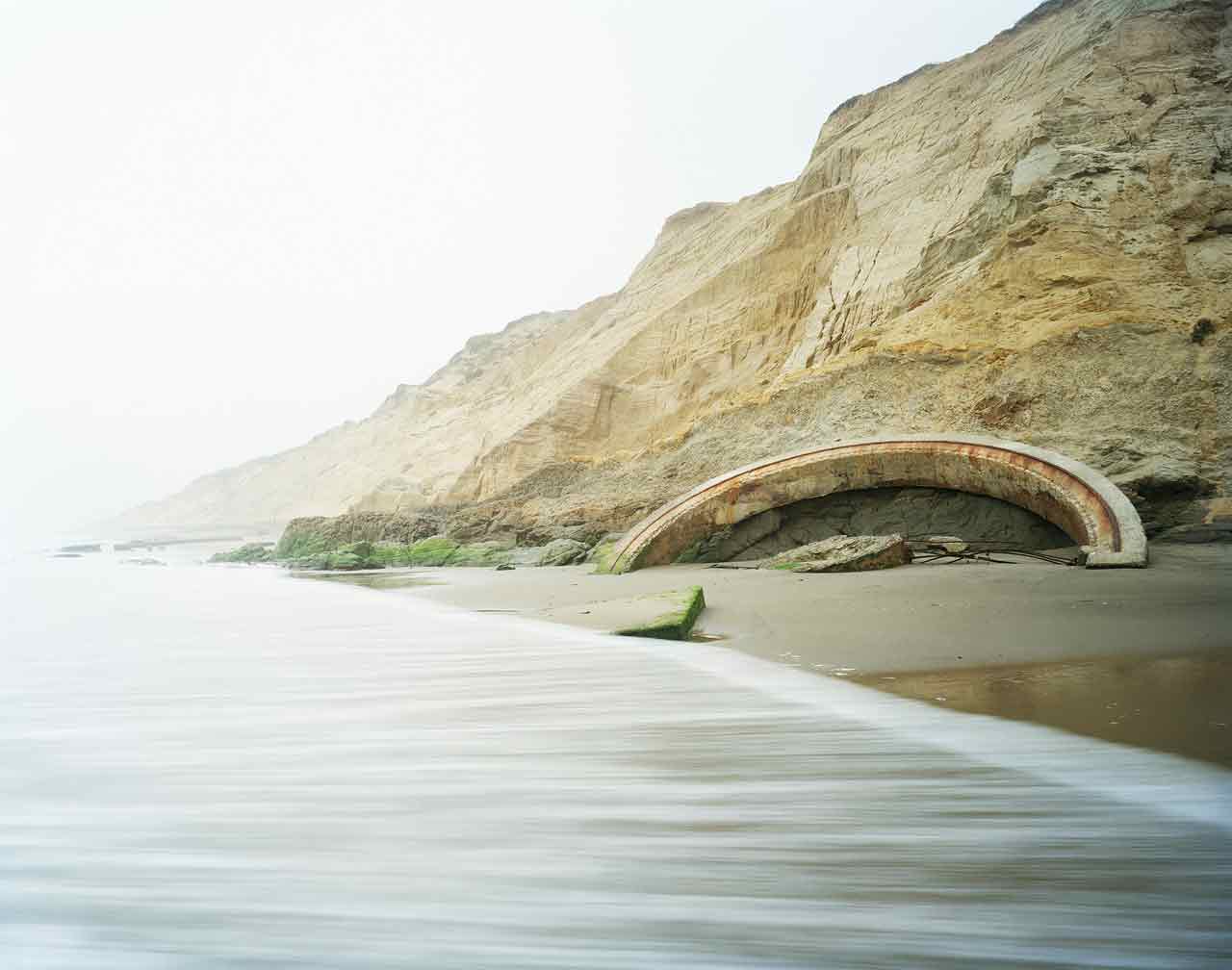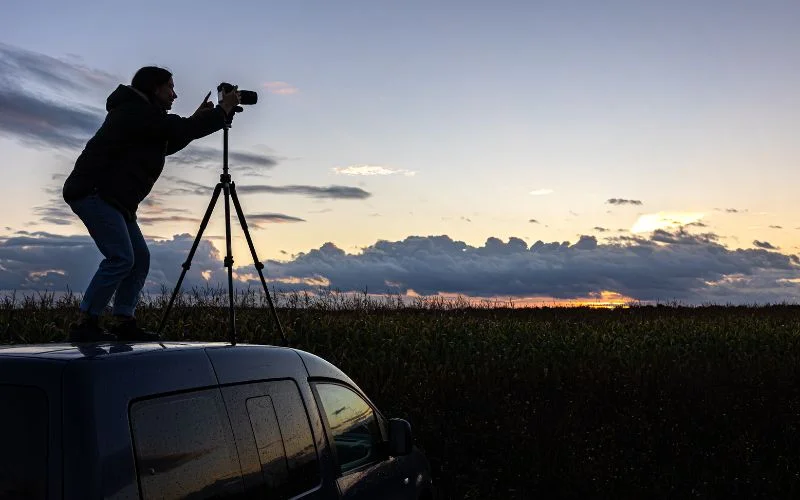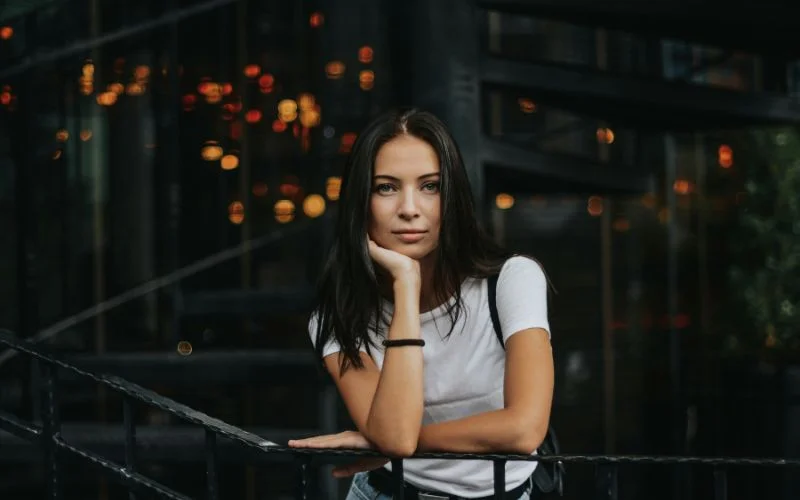Seattle-based photographer Eirik Johnson has always been interested in what he calls the “fraying edges” of our surroundings. These places can be as remote as the northernmost shore of Alaska, where makeshift cabins made of shipping pallets and weathered plywood stay against the desert tundra, or as near as the sewers underneath a city where light illuminates a never quitting improvisation of change. Perhaps, in seeking these places that only very quietly unveil their beauty, Johnson has learned to see with a devout patience.
One look to “Snow Star” or “Borderlands” and you’ll see that Johnson’s work doesn’t flirt with immodesty or insincerity. No, Johnson is a reverent photographer, always true to what once existed and enraptured with the yet to come. His portraits as well as his landscapes are deeply respectful to the lives and beauty found within the frame. This reverence might be the reason why his work is permanently housed in several art institutions, including the San Francisco Museum of Modern Art, and has been featured by the New York Times, GQ, and the Wall Street Journal.
In this interview, Johnson talks about his start in photography, explains his interest in capturing the filthy forgotten places, and reveals his approach to photographing landscapes.
Your work is stunning but also operates in an unique space between landscape, documentarian, and portrait photography. How did you get your start in these genres? How would you describe your work?
I was initially drawn to photography as a sort of tool to slow down and organize my inherent curiosity and years later that still holds true. Unlike the moving image, photography can leave you uncertain even when outlining a narrative in detail. That uncertainty is seductive. There are all sorts of possibilities and unknowns when looking at a photograph of a strange encampment in the woods or a young couple by a riverbank.
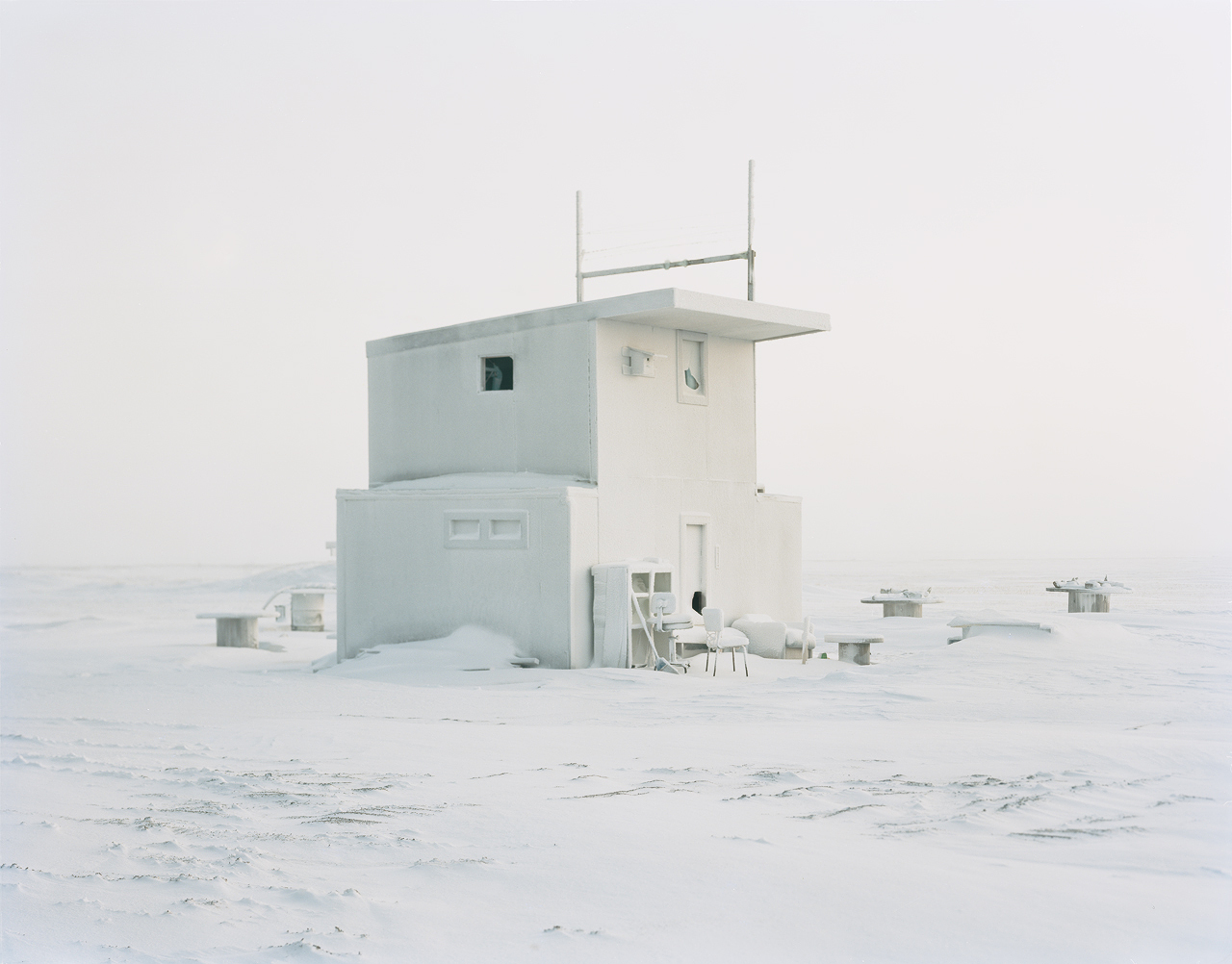 |
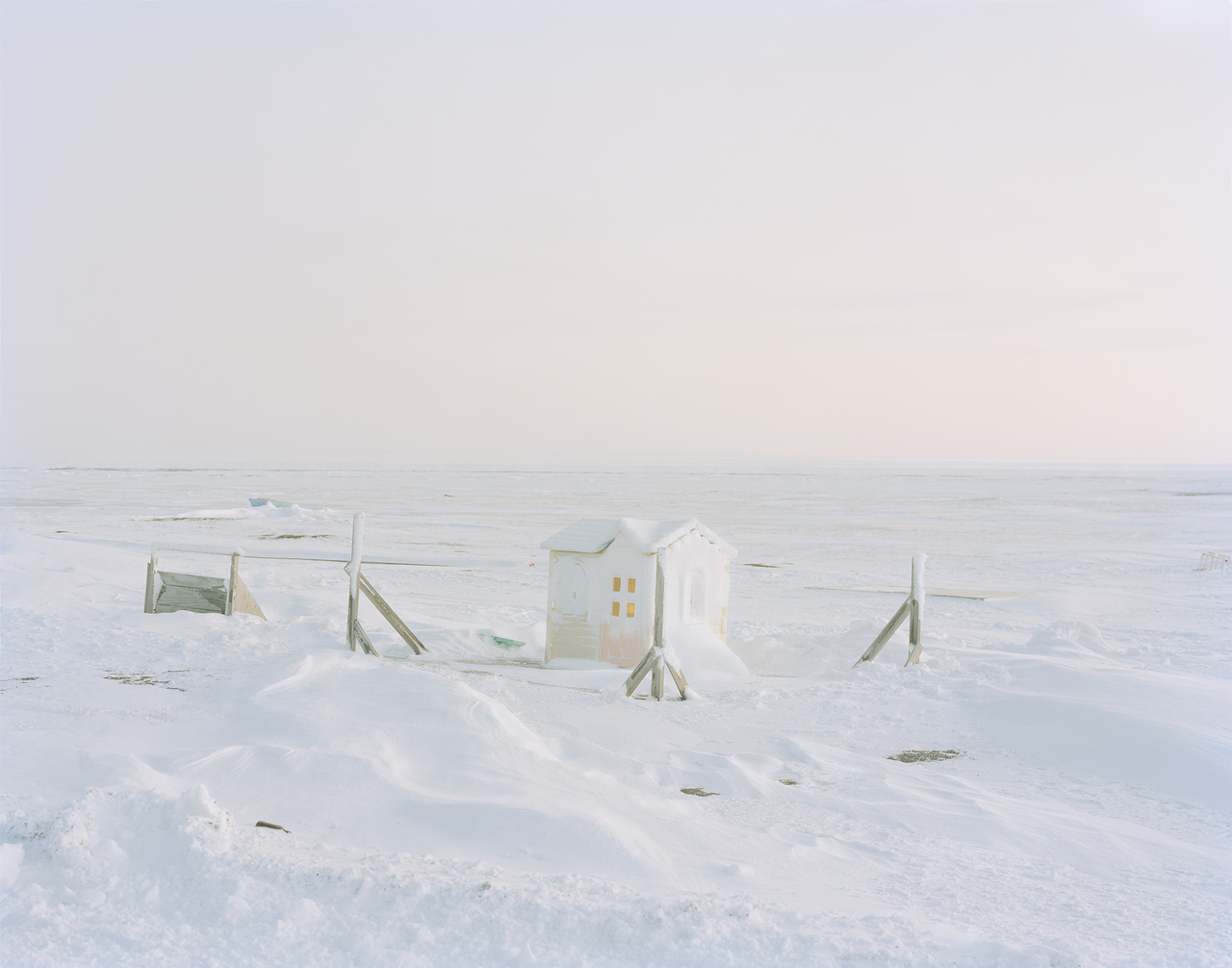 |
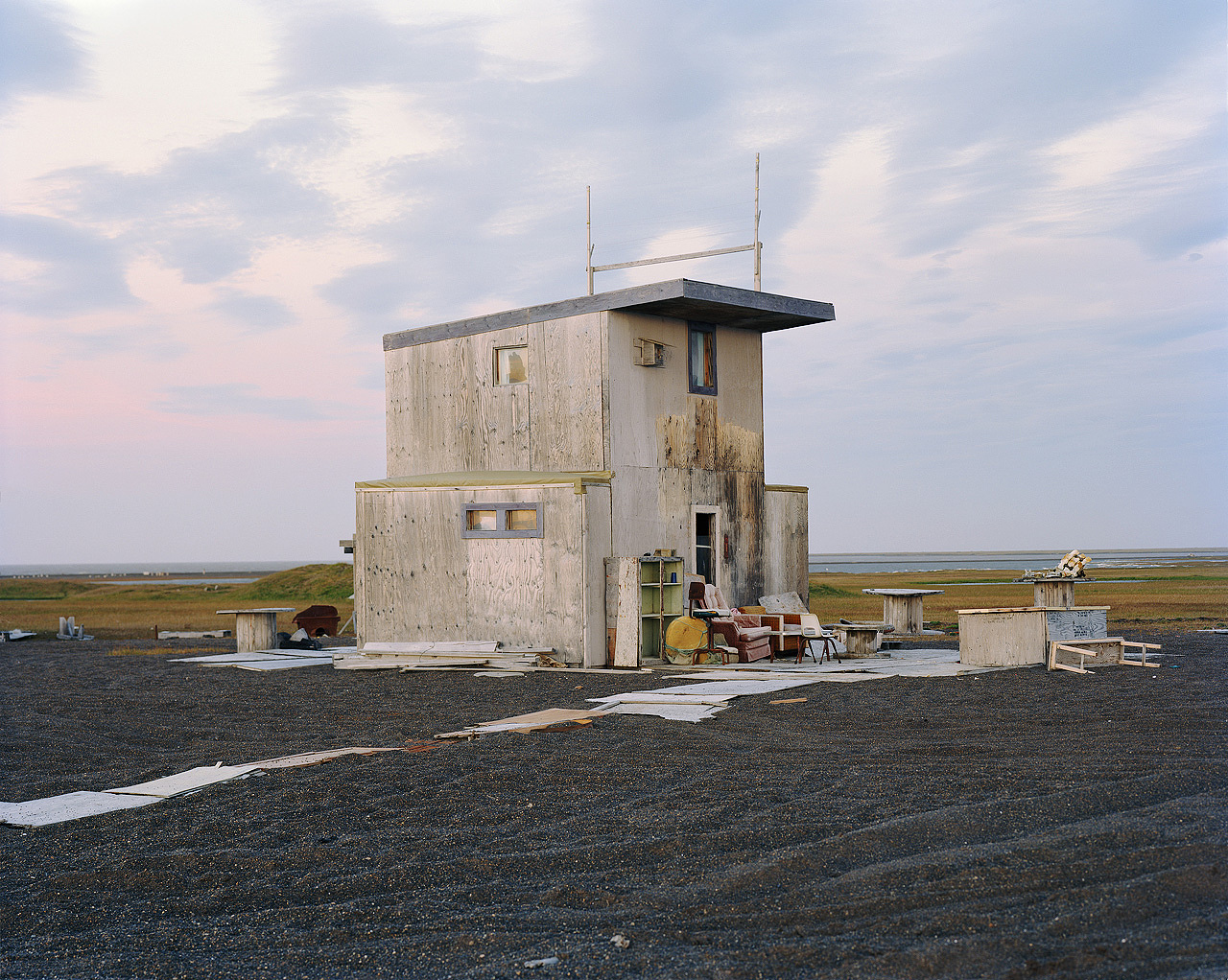 |
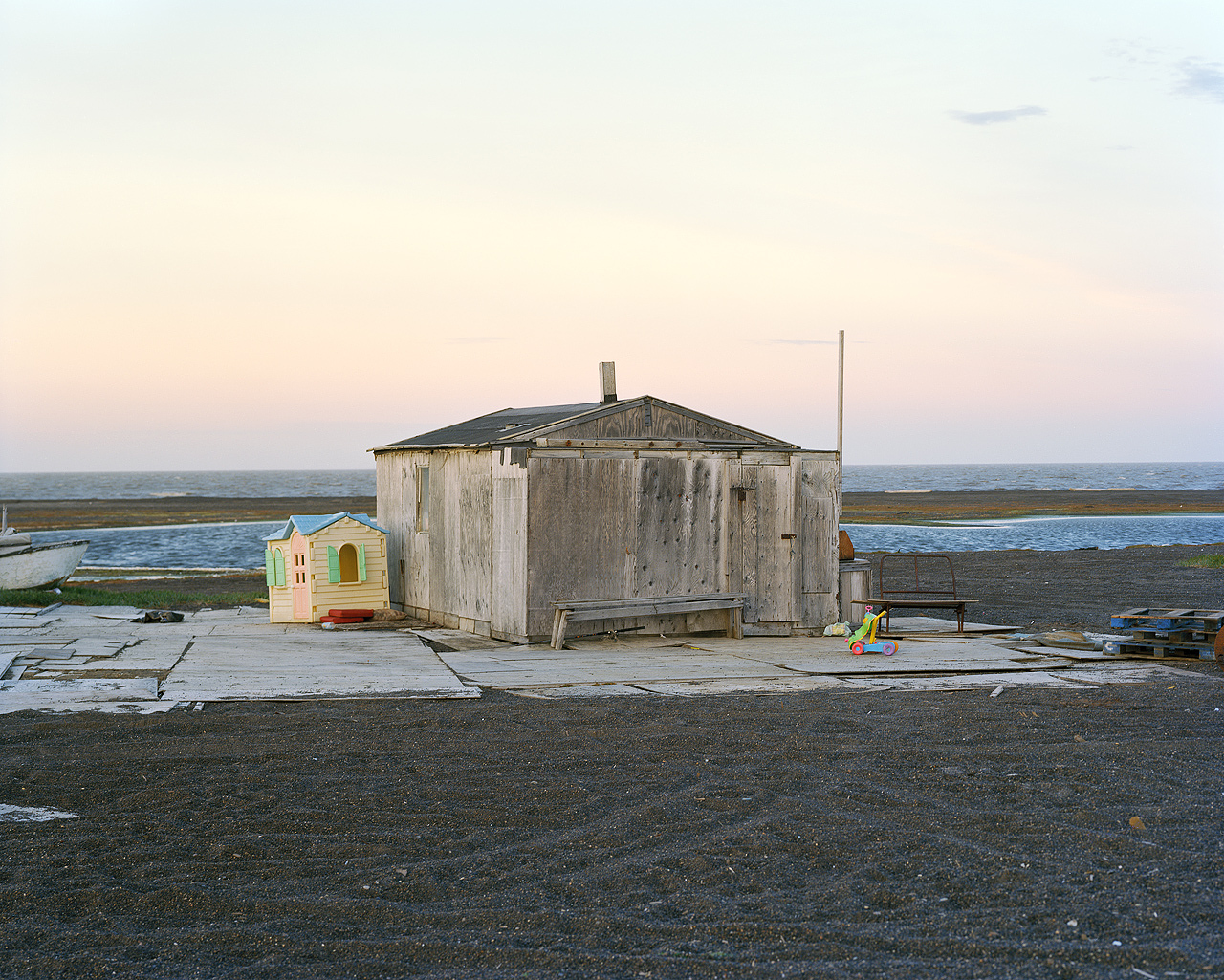 |
For Barrow Cabins, you went to the northernmost stretch of Alaska to photograph makeshift cabins occupied native Inupiats, as seen during the summer as well as winter months. Could you explain how this project came to mind? What visual story did you find in those structures?
I first began work on my project “Barrow Cabins” while on a separate editorial assignment in Barrow in the summer of 2010. I would photograph for the assignment during the day, then head out in the midnight and early morning hours of the arctic summer to photograph. The cabins are situated along the shores of the Chukchi Sea, part of the larger Arctic Ocean. In December 2012, I returned to photograph the cabins during the frigid grip of the Arctic Winter Solstice, when a brief four-hour window of dusk-like light illuminates the otherwise lightless days. The resulting winter images act as a sort of luminous erasure of the photographs made during the summer. Seen together, both the summer and winter series are a meditation on the passage of time and seasonal shift along the extreme horizon of the Arctic.
Snow Star is amazing. The last image for this project is now one of my favorite photos (above). Could you explain how you were able to get permission to shoot this religious ceremony? What was your aim?
I lived in Peru on a Fulbright Grant for a year after finishing college. During that time I became a sort of town photographer for a small campesino farming community. They asked if I’d like to accompany them on the pilgrimage of Qoyllur Riti, which I did. After my initial journey with them, I got to know many of those participating and returned for three more years. I was interested in the inherent spiritual connection between the place/landscape and the participants as well as the strange mixture of pre-Columbian and Catholic traditions.
How did you approach this project photographically? Why black and white? Why the long lens?
The pilgrims dance and sing for four days and nights, only breaking briefly for meals and rest. It is non-stop frenetic activity. All the while, you are in this Andean valley surrounded by glaciers and a thousand stars above. I chose to work with black and white to best represent that fluidity from day to night.
You have a great eye for depressing or failing cityscapes. How do you know when you found a site that needs to be photographed? Why do you think you’re drawn to these sites?
I’ve had a continued interest in cultural and environmental modes of improvisation. Many of my projects address this interest to some degree. This improvisation tends to play out mainly along what I call the fraying edges of the urban environment so that’s often where I go.
Borderlands has many striking images of sewers or debris, places that tend to be forgotten. But the colors and lighting in them are stunning. How did you manage to make these otherwise filthy places seem so alluring?
This picks up from where I left with the last question. Those fraying edges of our surroundings are in constant flux. Things change, the tide covers up an old mountain of tires, a winter rain floods an freeway underpass. With “Borderlands”, I would come back over and over again to sites I found interesting and observe how they changed, how light would fill an underground storm drain or illuminate a hidden campsite. That particular project taught me a great deal about patience.
What would you consider the most important advice you could give to other aspiring landscape/fine art photographers?
It’s a tried and true saying, but follow what you find interesting. Don’t get overly caught up in what you think others want to see. Go out and see for yourself.
Be sure to check out all of Eirik’s work on his website!
